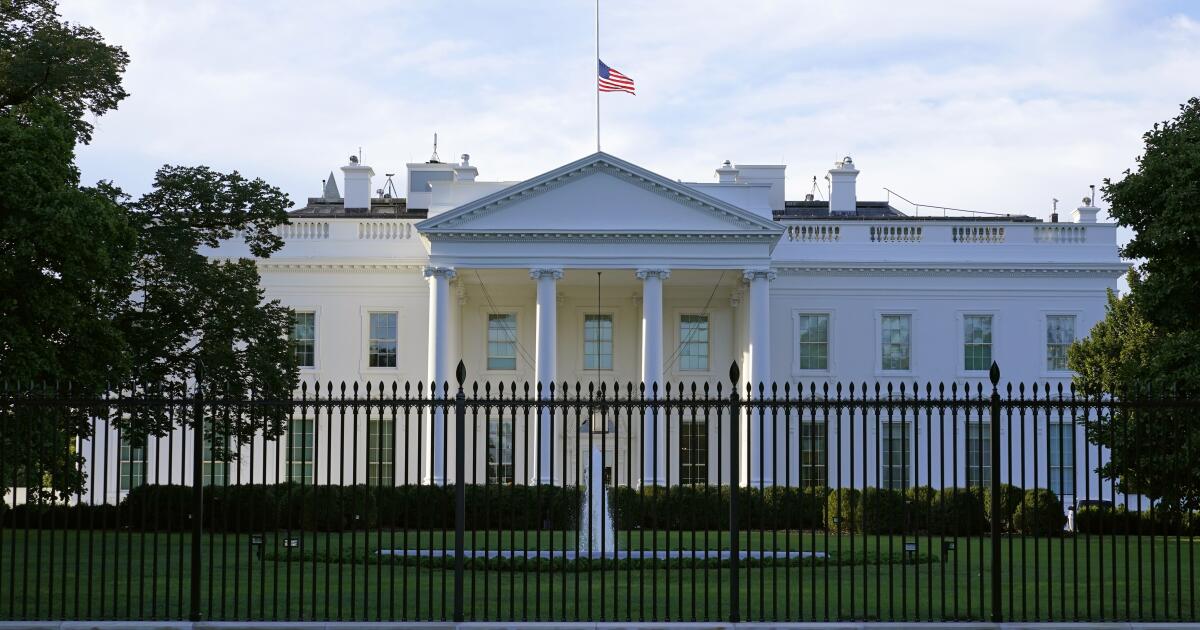Janice Hahn is running for a third and final term on the Los Angeles County Board of Supervisors and, in all likelihood, it will be the last elected term in her long political career.
In his first four years he was a member of a board that achieved historic improvement in the administration of essential programs for people living in poverty or living on the margins of the county. And in his current term, she was a member of a board that fought COVID-19, an unprecedented public health emergency.
In both terms, Hahn served his constituents well. Of the three people on the primary ballot, including former Sheriff Alex Villanueva, she is the best choice for District 4, which stretches from Vernon to Long Beach and from Palos Verdes to Whittier.
Los Angeles County has deep problems and has received criticism from many quarters, including the Los Angeles Times editorial board. If the county is so poorly run, why should we hire one of the supervisors who has been in charge for so long?
There are many answers, but they all hinge on one crucial fact: The county's outdated government structure limits what leaders can accomplish. This county of 10 million has the same responsibilities and the same number of elected leaders as any other county, including Imperial County, population 180,000, and Inyo County, population 19,000.
And yet, Hahn and the other supervisors decisively and correctly moved Los Angeles County away from a future in which all social problems (including poverty, petty crime, family breakdown, and homelessness) are addressed through building new and increasingly expensive prisons, while allowing mental health care and other treatments to deteriorate. The last eight years in Los Angeles County have been a race to get more treatment beds, more housing and more halfway house services for people returning to the county from prison or juvenile hall or leaving the foster care system without a place to live or enough job skills. It is the right path, but the directive must move faster and faster.
Hahn advocated for a crisis response system that relies on mental health workers rather than armed law enforcement officers. She took the lead in integrating Los Angeles County into the nationwide 988 system which, if built as planned, will fill an unmet need for telephone crisis counseling and, if needed, mobile response and clinical care.
In the midst of the pandemic, when county government became too comfortable with remote meetings that excluded the public from deliberations, Hahn brought the public back in by reopening the comment period during board meetings, much to the chagrin of some others. county leaders. “We simply cannot conduct public business without having live public testimony,” he told the editorial board, and he is right.
Hahn has been a strong advocate for expanding the board and directly elected executive leadership, two steps necessary for county government to become more representative and responsive to its constituents.
Having said all this, it is essential to remember that elections are a choice between candidates. None of its rivals is a better option.
Villanueva suffered a crushing defeat for re-election in 2022, for good reason. “My record as an elected sheriff stands on its own,” he told the editorial board, and he's certainly right about that. During the era of shutdowns and protests, when the county most needed a calm and capable top public safety official, Villanueva was more of a problem, abusing his powers as sheriff and refusing to work cooperatively with other county leaders.
Businessman, civil engineer and Rancho Palos Verdes Mayor John Cruikshank is more appealing than Villanueva, but he offers the wrong prescription for the county, urging a return to less enlightened housing and criminal justice policies. His perspective may be right for his small, wealthy town. It is wrong for the millions of county residents for whom the county could, and should, provide a way out of the cycle of failure and misery.
At the top of Hahn's to-do list is a light rail line from downtown Los Angeles to Artesia, which is a good project. But in his third term he should also focus on other critical projects, including building the county's alternative emergency response system and working with the state to provide mental health care, housing and other services by developing the unused land around Metropolitan State Hospital in Norwalk. . Of course, taking steps to restructure county government should also be on the agenda.











